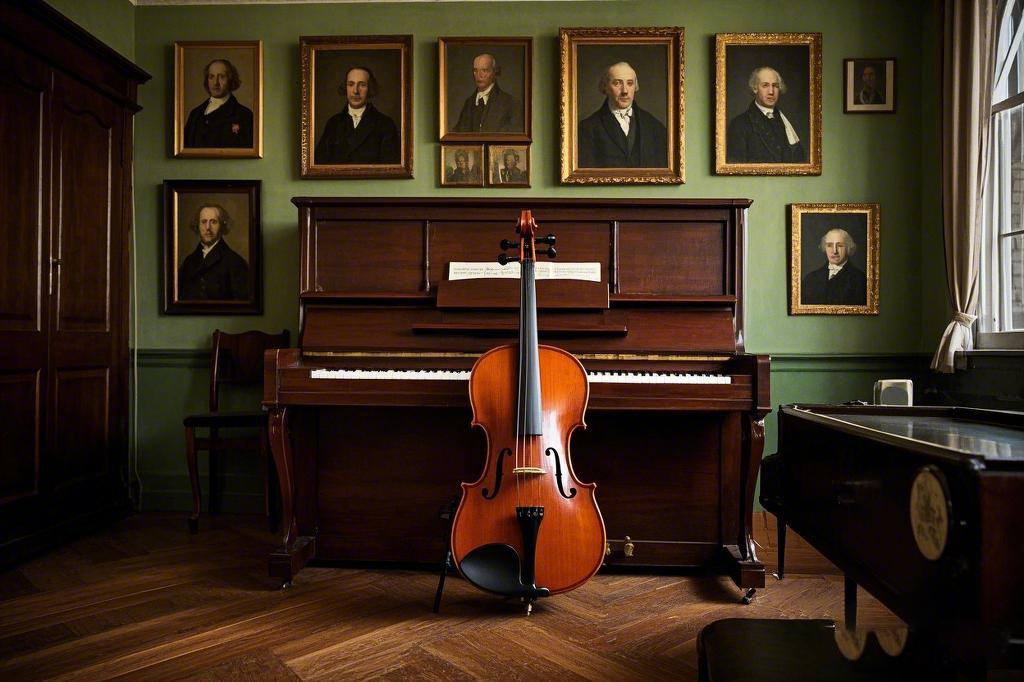China Violin Academy_ Cross-Cultural Lessons
Shang Kun 2025-02-26 188
Cross-Cultural Lessons at China Violin Academy: Bridging Borders Through MusicIn today's interconnected world, the fusion of cultures is more vital than ever. As global boundaries blur, the idea of blending traditions, art forms, and languages has become increasingly important. One such example of this cultural exchange is seen through music education, where students from different backgrounds learn together and enrich each other's experiences. But what happens when learning a highly technical art form like violin playing meets such diverse cultural influences? The China Violin Academy offers a unique opportunity for students to experience the intersection of Western classical music and Chinese traditions, providing a fresh perspective on violin education.
However, there’s a noticeable challenge that arises from this cross-cultural fusion: the differing approaches to music pedagogy. Western classical training emphasizes individualistic learning, technique perfection, and a structured system. On the other hand, Chinese culture places great importance on respect for tradition, collective learning, and the nuances of discipline. This contrast can initially create a tension that may leave students feeling overwhelmed or uncertain. The question becomes: How can these differences in teaching methods be harmonized to create an enriching experience for students of all backgrounds?
Breaking Barriers and Embracing DiversityAt the China Violin Academy, the answer lies in combining the best of both worlds. By blending Western violin techniques with the rich traditions of Chinese music, students experience a balanced approach that not only nurtures their technical abilities but also fosters an appreciation for the cultural roots of music. The Academy doesn’t just teach how to play the violin—it educates students on the deeper meaning behind the music they produce, cultivating an understanding of the context, history, and emotions tied to each piece. Through this model, students can experience personal growth and refine their skills while appreciating a broader, more inclusive perspective of music.
Moreover, the Academy recognizes the importance of collaboration in today’s world. With the rise of global communities, musicians can no longer remain isolated in their respective traditions. The focus at the China Violin Academy is on building cross-cultural communication skills—teaching students to understand and interpret music through different cultural lenses. This not only enhances their ability to perform, but also equips them with the skills necessary to work with others in an increasingly globalized world. And it doesn't stop there; this exposure also builds empathy, as students begin to appreciate the artistry of others in a much deeper, more meaningful way.

Lessons That Go Beyond MusicBut the impact of this cross-cultural exchange goes beyond just learning a new technique or musical style. The experience is transformative, allowing students to develop skills that will benefit them long after their time at the Academy. With every new lesson, students learn to break free from their comfort zones, trying out different interpretations of the same musical piece based on varying cultural influences. They explore music theory and technique through lenses that are influenced not only by European classical traditions but also by the rich textures of Chinese folk music. These influences often result in a richer, more emotional performance that resonates with audiences on a deeper level.
What’s even more remarkable is how the China Violin Academy helps cultivate soft skills such as patience, perseverance, and adaptability. Cross-cultural environments can be challenging, but they also offer students opportunities to grow personally and professionally. The collaborative nature of the program encourages problem-solving, creativity, and open-mindedness—qualities that are valuable in any field, be it music, business, or beyond.
A Rising Star in Music EducationThe China Violin Academy stands at the forefront of this cultural and artistic exchange, offering not just a traditional violin education but an opportunity to experience music as a universal language. Its innovative approach of blending Western technical mastery with Eastern artistic sensibilities is gaining recognition around the world. This model has shown that the fusion of cultures can produce a unique educational environment that not only nurtures technical proficiency but also shapes well-rounded, culturally aware musicians who are ready to tackle the global stage.
Indeed, it’s no longer just about playing the violin. It’s about understanding the deeper connections between people and cultures through the universal language of music. So, if you’re looking to immerse yourself in a learning experience that transcends borders and opens your mind to the full potential of music, the China Violin Academy may just be the perfect place to start. Whether you are a beginner or an advanced student, it’s never too late to discover the transformative power of music in a cross-cultural setting.
Why Choose Cross-Cultural Lessons?Beyond the technical training and the exposure to diverse musical traditions, cross-cultural lessons allow students to challenge their own assumptions, broaden their horizons, and unlock new ways of thinking. More than ever, the ability to adapt and collaborate with individuals from diverse backgrounds is crucial in today’s interconnected world. The China Violin Academy gives students the opportunity to grow not just as musicians, but as global citizens who can navigate and thrive in the cultural landscape of tomorrow.
So, why settle for traditional, one-dimensional violin lessons when you can embrace a rich, multi-layered approach to music? The world of music is vast and full of possibilities, and by studying at the China Violin Academy, students have the chance to open doors to endless opportunities, experiences, and most importantly—connections. What are you waiting for?
